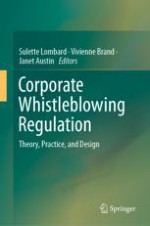2020 | OriginalPaper | Chapter
3. To Reward or Not to Reward: A Cross-Jurisdictional Comparison of the Reasons Why Securities Regulators Have Adopted or Rejected Policies to Pay Whistleblowers
Author : Janet Austin
Published in: Corporate Whistleblowing Regulation
Publisher: Springer Singapore
Activate our intelligent search to find suitable subject content or patents.
Select sections of text to find matching patents with Artificial Intelligence. powered by
Select sections of text to find additional relevant content using AI-assisted search. powered by
